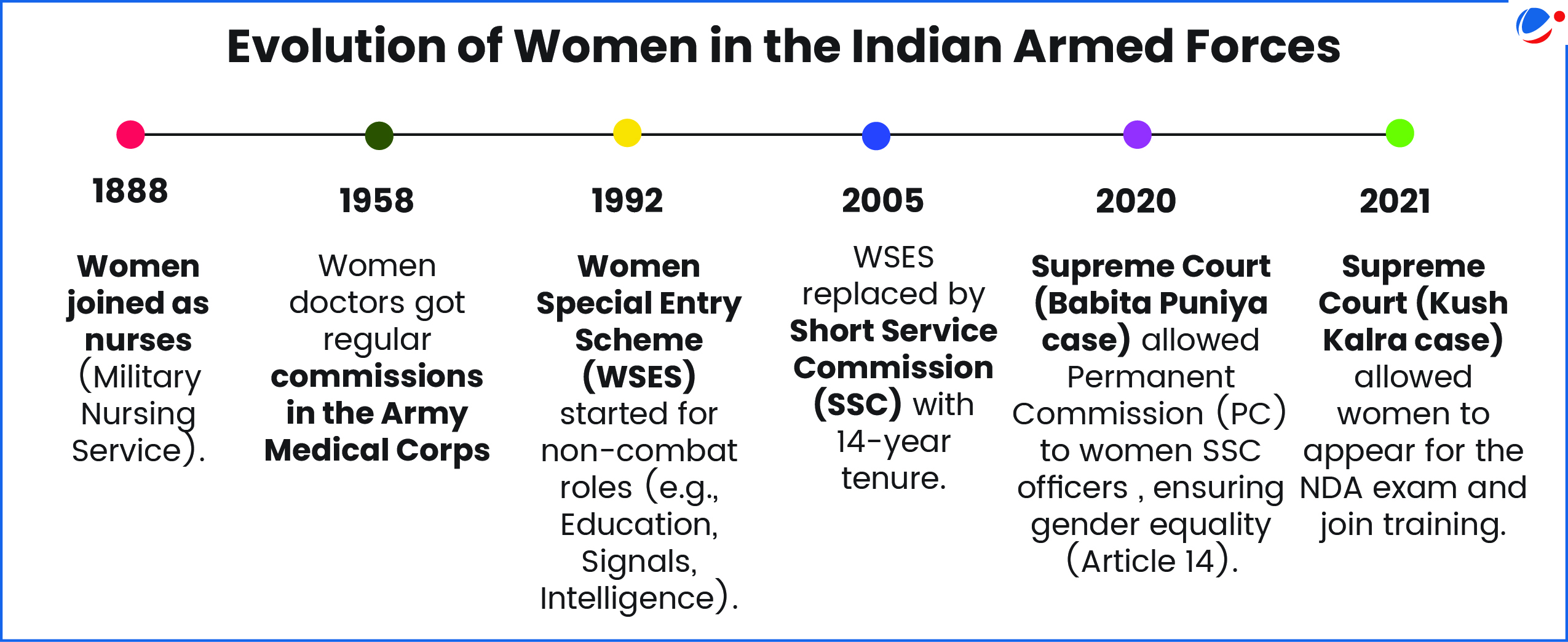Why in the news?
The first-ever batch of 17 female cadets graduated from the National Defence Academy (NDA).
Significance of Women in Armed Forces

- Constitutional Equality: Reinforces Article 14 (Right to Equality), Article 15 (Prohibition of discrimination) and Article 16 (Equal opportunity in public employment). Promotes a more inclusive and just defence structure.
- Operational Strength: Enhances the talent pool and brings diverse perspectives to planning and execution. Improves team performance and decision-making.
- Social Impact: Women have excelled in both combat and support roles, displaying strong professionalism. This helps break gender stereotypes in a traditionally male-dominated space.
- Example: During Operation Sindoor, Col. Sofia Qureshi and Wing Cmdr. Vyomika Singh led press briefings.
- Humanitarian Role: Women play a key role in Military Civic Action by building trust with local communities especially where male soldiers have limited access due to cultural norms. Crucial for conflict resolution and winning hearts and minds.
Steps taken to Increase Women's Participation in the Armed Forces
- Policy Measures
- Permanent Commission (PC): granted to Women Officers (WOs) in 11 Arms & Services (in addition to Army Medical Corps, Army Dental Corps and Military Nursing Service).
- Women as Agniveers: Recruits undergo same training and selection standards as men
- Structural Reforms
- Army Aviation Corps: Women allowed as pilots since 2021.
- Women on Warships: Now posted on naval ships, including roles like Navigation Officers.
- Outreach & Support Initiatives: IAF'S 'DISHA' Cell conducts nationwide campaigns and motivational talks to attract young women.
Challenges for Women in the Armed Forces
- Gender Bias & Societal Attitudes: Some leaders still hold stereotypes, questioning women's ability in leadership or combat. This may lead to role marginalization and underrepresentation.
- Infrastructure Deficits: Lack of gender-sensitive facilities in remote or combat areas (e.g., Siachen, submarines).
- Physical Demands & Training Gaps: Combat roles often come with high physical standards. Concerns have been raised over pregnancy, and lack of customized training.
- Work-Life Balance: Frequent transfers, long postings cause personal challenges, the problem may be exacerbated by women having kids.
Conclusion
As warfare evolves to prioritize technology, intelligence, and adaptability over physical strength, increasing women's participation in India's armed forces requires comprehensive reforms across multiple dimensions. Success hinges on implementing role-specific fitness standards, fostering gender sensitization, strengthening mechanisms for harassment etc.



